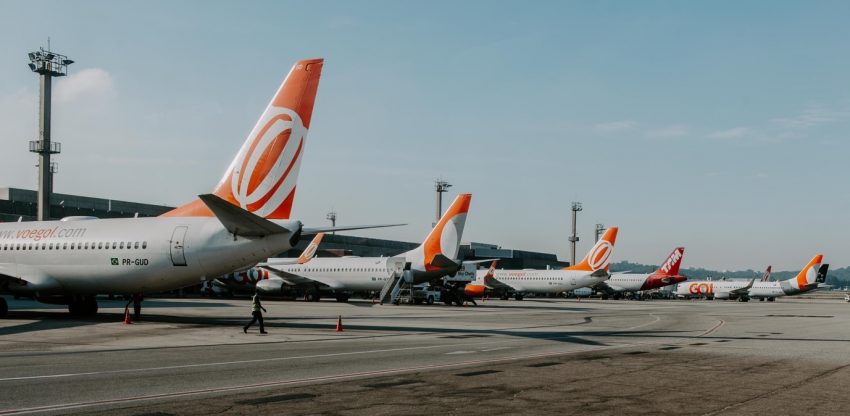Faced with a global crisis and a challenging domestic environment, Brazilian Airlines will need to think on their feet and adapt quickly to survive through the long road to recovery.
Global Aviation market will be driven by flexibility and efficiency
As the global aviation market rushes to adapt to the changing landscape, it becomes clear that while some changes are temporary, others are more permanent. Although leisure travel seems to rebound quicker due to months of repressed demand, it is uncertain whether corporate travel will ever recover to its former glory. The last few months have shown that videoconferencing tools (zoom, teams) are able to replace face-to-face meetings to a large extent, while many events and conferences have successfully moved online.
Throughout the Aviation world, flexibility has gained importance due to unprecedented uncertainty for travellers. IATA reports that this May, 41% of bookings have been made within 3 days of departure, compared to only 18% in the same month last year. Airlines have recognized the need to improve passengers’ perception of safety by investing in contactless solutions and improved health standards. This comes at a high cost. In order to be able to attract passengers with competitive prices while remaining afloat, the companies feel an increased need to improve efficiency.
Challenging scenario evident in Brazil
In Brazil, airlines have voiced their concerns to the government on the large amount of inefficiencies particular to Brazil. In an open webinar recorded last May, Jerome Cadier and John Rodgerson (CEOs of LATAM and Azul, respectively) listed the main inefficiencies native to Brazil, citing high fuel, air navigation and leasing costs and taxes, all of which they claim are much higher than neighbouring countries and pose a huge hurdle for their companies as they strive to move forward. According to them, however, the time is right for change, as the government has needed to shift its focus and open dialogue with this vital sector.
Meanwhile, the Brazilian airlines will need to look inward at their own inefficiencies and re-think their strategies as they adapt to changing conditions and customer requirements. Digital transformation gains importance, and there are already several success cases of flexible cabin use for cargo transportation, home and hotel luggage delivery, contactless boarding processes, to name a few.
In addition to the direct effects of the pandemic and international travel restrictions, the country’s devalued currency and customers’ decreased purchasing power are set to force, in the short to medium term, a larger participation of domestic and regional routes.
Brazil’s domestic market has already shown signs of faster recovery than its neighbors in Latin America. July data released by ANAC shows that Azul and Gol’s load factors were nearing the 80% mark. With a larger share of international flights compared to its local competitors, Latam Airlines’ showed more worrying results, at 66%. South America’s largest airline is struggling. After filing for bankruptcy, with debts in the billions of US Dollars, a life-saving loan was denied by a New York court. The company is still in negotiations with Brazil’s Development Bank BNDES to stay alive.
On the global level, IATA also expects recovery of domestic aviation markets to occur faster than international travel. Even as demand slowly recovers, another real risk on the long term is loss of connectivity. The total number of unique city pairs has decreased sharply this year.
Back in March, Brazil’s Civil Aviation Authority ANAC adopted a slot waiver to avoid punishing airlines, who had to cancel flights, with the loss of their slots. Congonhas (CGH) Airport in São Paulo, historically the second busiest airport in the country saw business drop to less than two movements per day in May.
Changing competitive landscape
The fast changes caused by the disruption and reorganization of the competitive landscape in Brazil raise an opportunity for the existing airlines to chase the coveted slots at high interest airports. Just last year, CGH was the stage of a fierce battle for the slots Avianca Brasil left behind when it was forced to cease operations. With Gol and LATAM not allowed to take over any more slots, these were split between Azul and three smaller carriers. One of them was later absorbed by Azul, which recently rebranded the existing 14 Cessna Grand Caravan nine-seaters as a new regional Airline, Azul Conecta.
Newcomers Itapemirim and Nella also prepare for battle in the increasingly attractive regional aviation and LCC markets. Success will be hard fought, as the Low Cost Carrier model has proven difficult to implement in Brazil due to high levels of regulation and comparatively high direct costs. Further changes in the competitive landscape are expected. In August, Azul and Latam Airlines commenced a codeshare agreement with 64 domestic routes and growing, which may or may not prove permanent.
About To70. To70 is one of the world’s leading aviation consultancies, founded in the Netherlands with offices in Europe, Australia, Asia, and Latin America. To70 believes that society’s growing demand for transport and mobility can be met in a safe, efficient, environmentally friendly and economically viable manner. To achieve this, policy and business decisions have to be based on objective information. With our diverse team of specialists and generalists to70 provides pragmatic solutions and expert advice, based on high-quality data-driven analyses. For more information, please refer to www.to70.com.

